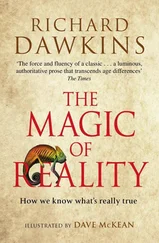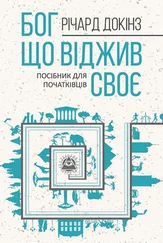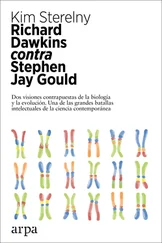Alas, this capsule's chance of passing within a parsec of another replication bomb is forlornly small. Some commentators see its value as an inspirational one for the population back home. A statue of a naked man and woman, hands raised in a gesture of peace, deliberately sent on an eternal outward journey among the stars, the first exported fruit of the knowledge of our own life explosion – surely the contemplation of this might have some beneficial effects upon our normally parochial little consciousnesses; some echo of the poetic impact of Newton's statue in Trinity College, Cambridge, upon the admittedly giant consciousness of William Wordsworth:
And from my pillow, looking forth by light
Of moon or favouring stars, I could behold
The antechapel where the statue stood
Of Newton with his prism and silent face,
The marble index of a mind for ever
Voyaging through strange seas of Thought, alone.
BIBLIOGRAPHY AND FURTHER READING
{163}
With a few exceptions I have limited this list to readily accessible books rather than technical works that can be found only in university libraries.
Bodmer, Walter, and Robin McKie, The Book of Man: The Human Genome Project and the Quest to Discover Our Genetic Heritage (New York: Scribners, 1995).
Bonner, John Tyler, Life Cycles: Reflections of an Evolutionary Biologist (Princeton: Princeton University Press, 1993).
Cain, Arthur J., Animal Species and Their Evolution (New York: Harper Torchbooks, 1960).
Cairns-Smith, A. Graham, Seven Clues to the Origin of Life (Cambridge: Cambridge University Press, 1985).
Cherfas, Jeremy, and John Gribbin, The Redundant Male: Is Sex Irrelevant in the Modern World? (New York: Pantheon, 1984).
Clarke, Arthur C, Profiles of the Future: An Inquiry into the Limits of the Possible (New York: Holt, Rinehart & Winston, 1984).
Crick, Francis, What Mad Pursuit: A Personal View of Scientific Discovery (New York: Basic Books, 1988).
Cronin, Helena, The Ant and the Peacock: Altruism and Sexual Selection from Darwin to Today (New York: Cambridge University Press, 1991).
Darwin, Charles, The Origin of Species (New York: Penguin, 1985).
– -, The Various Contrivances by Which Orchids are Fertilised by Insects (London: John Murray, 1882). {164}
Dawkins, Richard, The Extended Phenotype (New York: Oxford University Press, 1989).
– -, The Blind Watchmaker (New York: W.W. Norton, 1986).
– -, The Selfish Gene, new ed. (New York: Oxford University Press, 1989).
Dennett, Daniel C, Darwin's Dangerous Idea (New York: Simon & Schuster, 1995).
Drexler, K. Eric, Engines of Creation (Garden City, N.Y.: Anchor Press/Doubleday, 1986).
Durant, John R., ed. Human Origins (Oxford: Oxford University Press, 1989).
Fabre, Jean-Henri, Insects, David Black, ed. (New York: Scribners, 1979).
Fisher, Ronald A., The Genetical Theory of Natural Selection, 2d. rev. ed. (New York: Dover, 1958).
Frisch, Karl von, The Dance Language and Orientation of Bees, Leigh E. Chadwick, trans. (Cambridge: Harvard University Press, 1967).
Gould, James L., and Carol G. Gould, The Honey Bee (New York: Scientific American Library, 1988).
Gould, Stephen J., Wonderful Life: The Burgess Shale and the Nature of History (New York: W.W. Norton, 1989).
Gribbin, John, and Jeremy Cherfas, The Monkey Puzzle: Reshaping the Evolutionary Tree (New York: Pantheon, 1982).
Hein, Piet, with Jens Arup, Grooks (Garden City, N.Y.: Doubleday, 1969).
Hippel, Arndt von, Human Evolutionary Biology (Anchorage: Stone Age Press, 1994).
Humphrey, Nicholas K., Consciousness Regained (Oxford: Oxford University Press, 1983).
Jones, Steve, Robert Martin and David Pilbeam, eds., The Cambridge
Encyclopedia of Human Evolution (New York: Cambridge University Press, 1992).
Kingdon, Jonathan, Self-made Man: Human Evolution from Eden to Extinction? (New York: Wiley, 1993).
Macdonald, Ken C, and Bruce P. Luyendyk, “The Crest of the East Pacific Rise,” Scientific American, May 1981, pp. 100-116. {165}
Manning, Aubrey, and Marian S. Dawkins, An Introduction to Animal Behaviour, 4th ed. (New York: Cambridge University Press, 1992).
Margulis, Lynn, and Dorion Sagan, Microcosmos: Four Billion Years of Microbial Evolution (New York: Simon & Schuster, 1986).
Maynard Smith, John, The Theory of Evolution (Cambridge: Cambridge University Press, 1993).
Meeuse, Bastiaan, and Sean Morris, The Sex Life of Plants (London: Faber & Faber, 1984).
Monod, Jacques, Chance and Necessity: An Essay on the Natural Philosophy of Modern Biology, Austryn Wainhouse, trans. (New York: Knopf, 1971).
Nesse, Randolph, and George C. Williams, Why We Get Sick: The New Theory of Darwinian Medicine (New York: Random House, 1995).
Nilsson, Daniel E., and Susanne Pelger, “A Pessimistic Estimate of the Time Required for an Eye to Evolve,” Proceedings of the Royal Society of London, B (1994).
Owen, Denis, Camouflage and Mimicry (Chicago: University of Chicago Press, 1982).
Pinker, Steven. The Language Instinct: The New Science of Language and the Mind (New York: Morrow, 1994).
Ridley, Mark, Evolution (Boston: Blackwell Scientific, 1993).
Ridley, Matt., The Red Queen: Sex and the Evolution of Human Nature (New York: Macmillan, 1994).
Sagan, Carl, Cosmos (New York: Random House, 1980).
– -, and Ann Druyan, Shadows of Forgotten Ancestors (New York: Random House, 1992).
Tinbergen, Niko, The Herring Gull's World (New York: Harper & Row, 1960).
– -, Curious Naturalists (London: Penguin, 1974).
Trivers, Robert, Social Evolution (Menlo Park, Calif.: Benjamin-Cummings, 1985).
Watson, James D., The Double Helix: A Personal Account of the Discovery of the Structure of DNA (New York: Atheneum, 1968).
Weiner, Jonathan, The Beak of the Finch: A Story of Evolution in Our Time (New York: Knopf, 1994). {166}
Wickler, Wolfgang, Mimicry in Plants and Animals, R. D. Martin, trans. (New York: McGraw-Hill, 1968).
Williams, George C., Natural Selection: Domains, Levels, and Challenges (New York: Oxford University Press, 1992).
Wilson, Edward O., The Diversity of Life (Cambridge: Harvard University Press, 1992).
Wolpert, Lewis, The Triumph of the Embryo (New York: Oxford University Press, 1992).
{167}
Adenine, 144. See also DNA
African Eve, 41, 44- 57. See also Ancestors and descendants
Age effects, 127- 31
Amino acids, 12, 23
Analog code, 12- 16, 19
Ancestors and descendants:
cousin-ships, 34- 35, 36, 41- 42, 52;
family trees, 48- 53;
focal ancestor, 55, 56;
genetic code in, 12, 42- 43, 44;
mitochondrial DNA, 47- 48, 49- 50;
model of, 35- 36;
most recent common ancestor, 54- 56;
numbers of, 33- 34, 35- 36;
reproductive success and, 107- 8;
role of genes in, 2- 4, 28, 117- 18, 131;
sharing of, 35, 36- 38;
single or universal ancestor theory, 12, 38- 39, 44- 57;
survival of, 1- 2, 3, 28, 127.
See also Generations
Angler fish, 71. See also Fishes
Antelopes, 105. See also Mammals
Ants. See Insects
Apes and gorillas. See Mammals
Argument from Design, 98
Читать дальше












